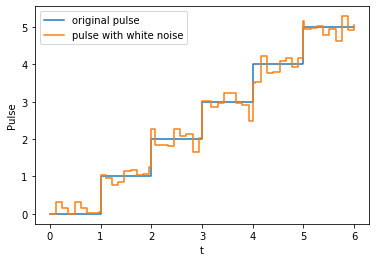Final submission of the project
This is the permanent link for the deliverables of the GSoC 2019 QuTiP project "Noise Models in QIP Module". The aim of this project is to equip the QuTiP `qip` module with a numerical simulator using the open system solver and the optimal control module. The final deliverables generalize this goal a little bit and establish a framework for NISQ (Noisy Intermediate-Scale Quantum) simulator, upon which models for different quantum devices can be built. Two existing examples in the `qip` modules were refactored and adapted to this new framework. We expect to release this new feature in the next major version of QuTiP. As it is a framework for simulation of quantum devices, future work includes implementing more concrete and modern examples of quantum computing models such us ion trap or superconducting quantum computing. The main deliverables containing the following: A numerical NISQ simulator using the QuTiP opens system solver. Refactoring the existing `SpinChain` a


